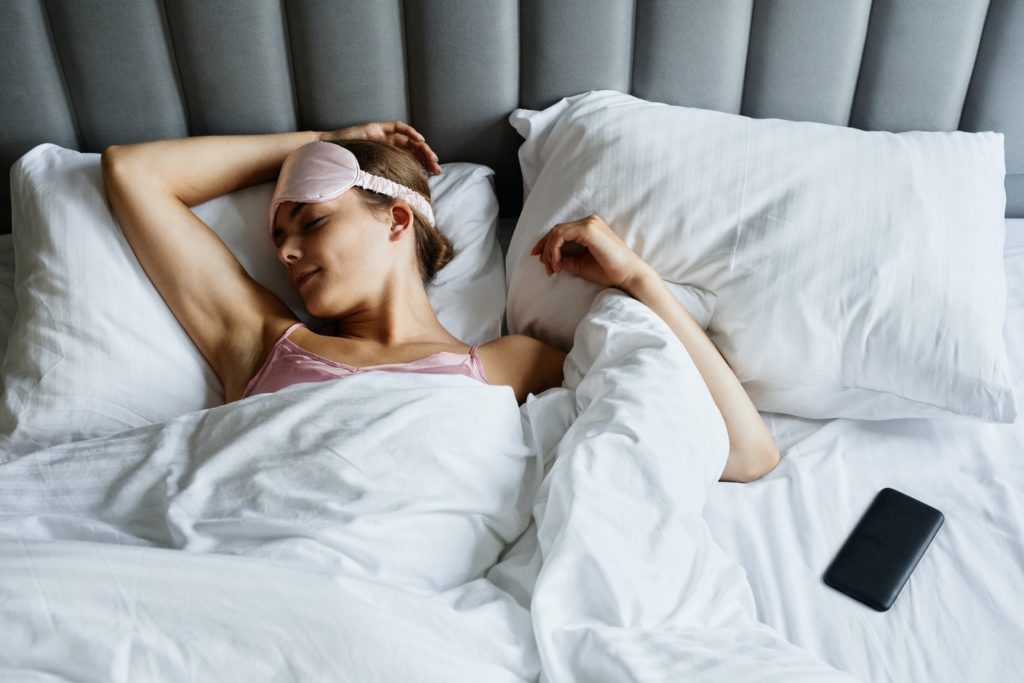How to Nap Like a Pro – Science of Sleep, Pros and Cons of Napping
Naps – you either love them, or you hate them. Whether they refresh you or make you groggy all depends on if you do them right. Yup. There’s a right way to nap. But are they even good for us? Are humans designed for napping?

Find out the benefits, downsides, and science behind these mini-sleep sessions and learn all the answers to your questions. Are naps good for us, or do they drastically mess with our internal clock? Does day rest ruin nighttime sleep? Let’s find out.
What is Napping
Napping is a short rest taken during the day. It is done during the day and can have benefits and side effects depending on how long you nap and the type you take.
Most of us try to get a good night’s rest so that we can be alert and productive throughout the day. If you’ve seen this article though, you’ll know that not everyone even needs 8 hours of sleep.
Benefits
Many have experienced a sudden crash in productivity and sleepiness in the afternoon. It may be due to the food you ate, like if you ate a big carbohydrate-heavy lunch. It may also be hardwired into us.
Napping can reduce the decline of productivity and alertness you experience normally as the day goes by. This is especially true if you wake up early in the day. Napping can reduce sleepiness, increase alertness, increase concentration, boosts memory, and can help improve your mood. This mood boost can be seen in children, but adults can also benefit from happier feelings and emotion regulation after a daytime rest.
Another benefit to naps can be a boost in learning. Since you are able to concentrate and memorize more, naps help increase your ability to retain and use information.
Science Behind Naps
In studies using electrodes to map out brain activity, there is a consistent preprogrammed drop in alertness. It happens in the afternoon, usually between 1 pm and 4 pm and it happens for most of us. This means we may have been designed biologically for a long nighttime rest and a shorter afternoon rest.
Keep in mind, napping can help reduce fatigue, but it does not replace sleep. It can help with some symptoms of insomnia, but nighttime sleep is vital to health. Napping can help if you miss sleep at night, but it does not have the same restorative effects that nighttime sleep does.
Types of Naps
The single nighttime rest we have during the night is called monolithic sleep. Science suggests our biology is hardwired for a biphasic sleep pattern, which is a long rest at night and a short afternoon rest.
Aside from these two forms of rest, there are other types of naps to take into account. Fulfillment naps help children reach their sleep needs. You may need an essential nap, those that help you recover if you’re sick or injured. Recovery naps can help you make up for sleep if you missed a couple hours the night before and proactive naps can help you if you plan to miss sleep the next night.
Why you’re napping matters as much as the nap you’re taking. Look at the length of a nap as well. Short naps lasting around 20 to 30 minutes raise alertness, mood, and concentration. Longer naps lasting over 45 minutes can help you if you need to recover from illness.
Pros and Cons
Napping can be good and bad. If we rest a short amount, we can fight against sleepiness, but it’s akin to snacking before a meal. Naps will not replace sleep but it can help you concentrate and feel more alert.
If you nap too long, however, you can wake up from a nap more groggy and worse off than before. Plus, if you already struggle to sleep at night, naps can make it worse. If you struggle with insomnia or sleeping through the night, it is better to build up that tired feeling and save it for the night. This will help you sleep easier at night and stay asleep for longer, deeper sleep.
How to Nap Like a Pro
Here are the basics of napping like a pro. If you’re going to nap, make sure it is early in the day, around 1 pm to 3 pm if possible. Napping earlier in the afternoon like this allows you to gain the benefits of naps without the cons like grogginess. The earlier you nap in the day, the less likely you are to disrupt nighttime sleep.
Make sure the nap is only about 20 minutes long. If you do need to plan a long nap, make sure you give yourself extra time to wake up. It is much more difficult to wake up from long naps than short ones.
Some tips for setting up your perfect nap are to make sure the room is cool and the lighting is dim. Cozy up under a blanket and take deep, slow breaths. Set an alarm for 30 minutes, assuming you take about 7 to fall asleep. After your nap, you should wake up feeling more alert, refreshed, and ready to be productive.
Quick Tips for Napping
You only have about 20 minutes to nap, it’s important to get the most out of it! Here are your quick tips.
- Set an alarm and a backup alarm – you don’t want to fall asleep again. Make sure you set two alarms just in case.
- Safety – Make sure your environment is safe
- Noie and light – use ear plugs and an eye mask to limit noise and light.
- Schedule it – if you are a napper and your schedule allows it, try to nap around the same time each day to make it a habit.
- Time them right – you only need 20 short minutes to gain all those nap benefits, so make sure your naps are the right length.
- Caffeine it up – if you have a cup of coffee right before your nap, the effects of the caffeine activate right as you wake up in 20 minutes.
The Takeaway
Naps can be good or bad, depending on your sleep schedule, and the way you nap. There are many benefits to napping, such as a boost in memory, learning, concentration, mood, and alertness. Learn to nap like a pro to get the most out of your daytime rest.
Health comes from within, so eat nutritious food, exercise when you can, and care for your mental health. Daily habits become building blocks for wellbeing and health. Remember to take care of microbiota health. Learn everything you need to know about gut microbiota today for free here.





